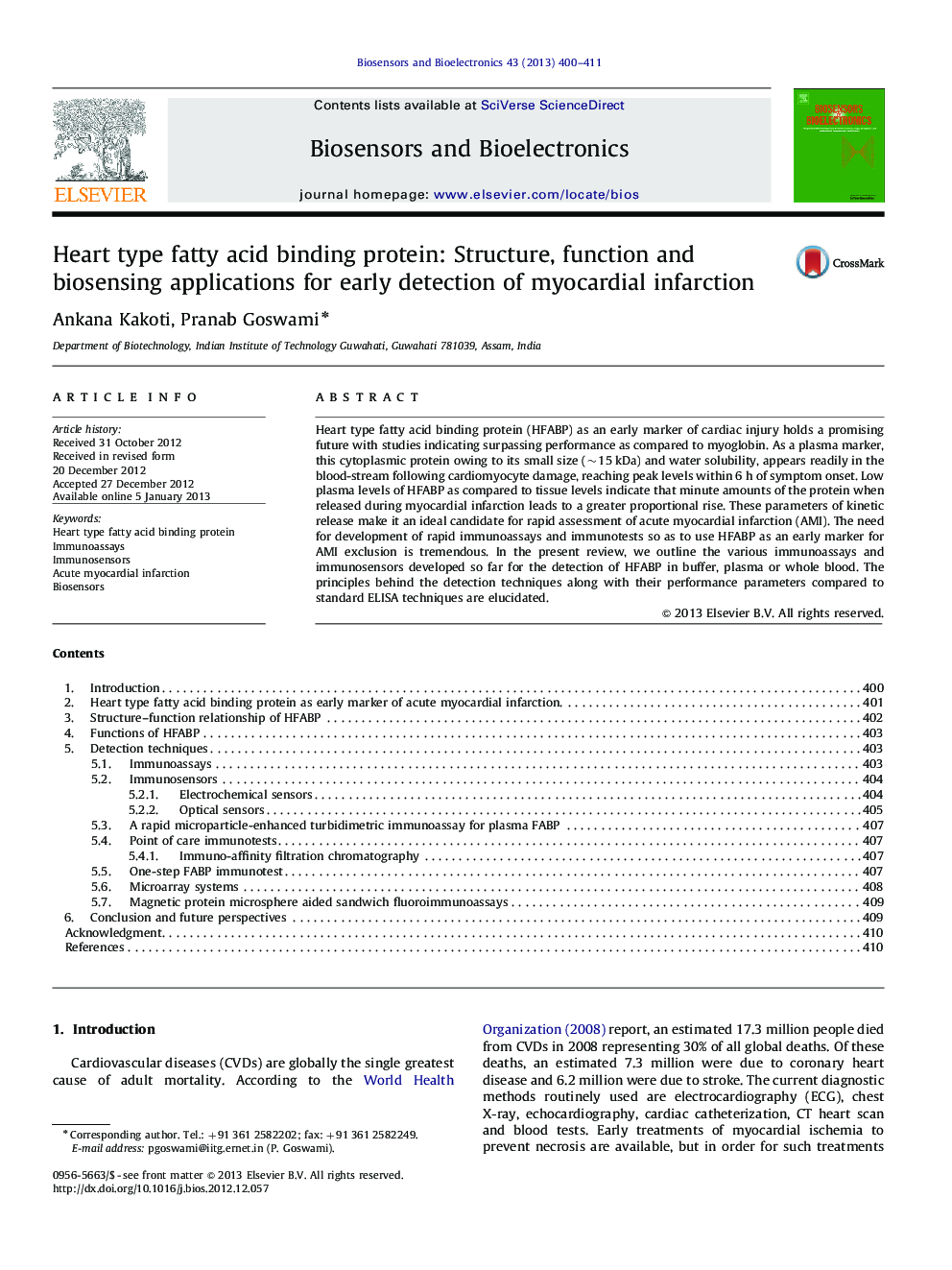| Article ID | Journal | Published Year | Pages | File Type |
|---|---|---|---|---|
| 866816 | Biosensors and Bioelectronics | 2013 | 12 Pages |
Heart type fatty acid binding protein (HFABP) as an early marker of cardiac injury holds a promising future with studies indicating surpassing performance as compared to myoglobin. As a plasma marker, this cytoplasmic protein owing to its small size (∼15 kDa) and water solubility, appears readily in the blood-stream following cardiomyocyte damage, reaching peak levels within 6 h of symptom onset. Low plasma levels of HFABP as compared to tissue levels indicate that minute amounts of the protein when released during myocardial infarction leads to a greater proportional rise. These parameters of kinetic release make it an ideal candidate for rapid assessment of acute myocardial infarction (AMI). The need for development of rapid immunoassays and immunotests so as to use HFABP as an early marker for AMI exclusion is tremendous. In the present review, we outline the various immunoassays and immunosensors developed so far for the detection of HFABP in buffer, plasma or whole blood. The principles behind the detection techniques along with their performance parameters compared to standard ELISA techniques are elucidated.
► Biosensing of heart type fatty acid binding protein (HFABP). ► Discussion on HFABP as an early marker for acute myocardial infarction. ► Structure–function relationship of HFABP. ► Detection techniques for HFABP.
